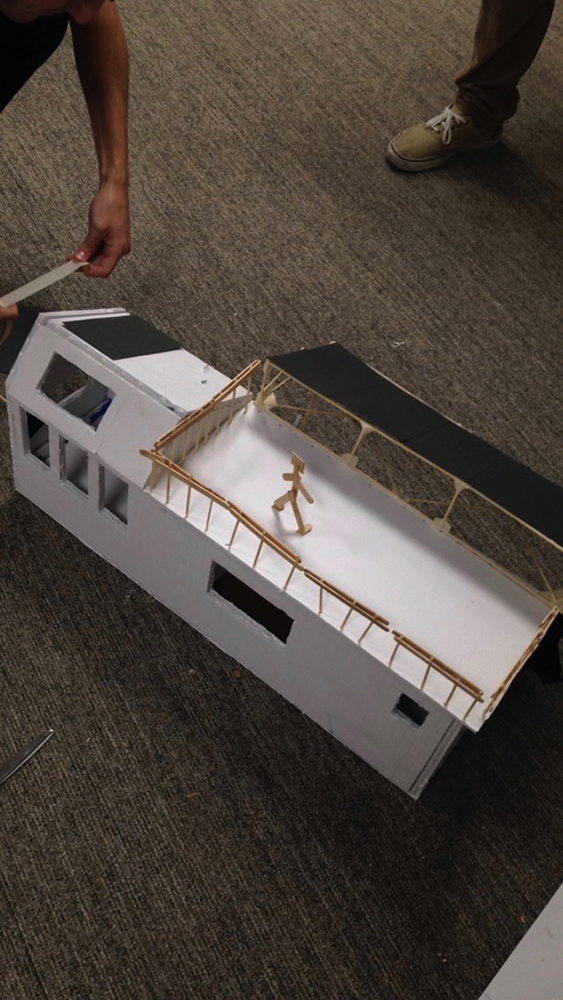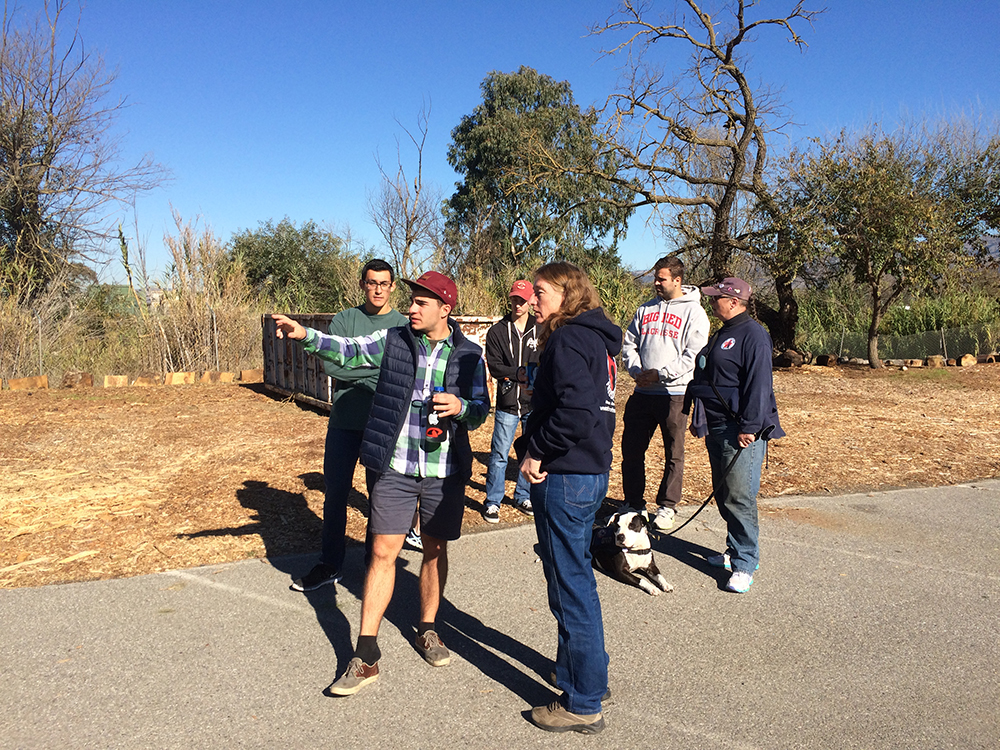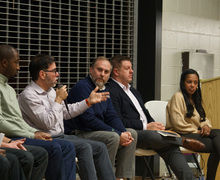Santa Clara University students participate in tiny house building competition
Courtesy of Emma West
The team of students at Santa Clara University decided that their client would be a local nonprofit called Operation Freedom Paws (OFP). The students have had to make sure its design accommodates OFP clients.
Building a tiny house is no tiny project. By the time students at Santa Clara University finish building their house for the Sacramento Municipal Utility District Tiny House Competition, it will be almost two years in the making.
In order to be considered “tiny,” houses must be within 100 to 400 square feet and have a width of less than eight-and-a-half feet. These dimensions allow the houses to be legally towed on the trailers used to bring them to the competition, said George Giannos, a junior environmental studies major at SCU.
The final presentation will occur Oct. 12-15. Each team gets a lot on a small mock street, which they have to decorate to look like the environment that their house will be in after the completion is completed, said Suzette Bienvenue, creator of the Tiny House Project.
The teams will be judged on architecture, energy efficiency, livability of the house and how well they communicate their designs during the public presentations, Bienvenue said.
Giannos, whose interest in the project is primarily in construction, added that it’s not all about the size of the tiny house. Teams are also judged upon functionality and aesthetics.
One other major aspect of the Tiny House Competition is there has to be an end purpose in mind when building the house, so that the students are designing with a target client in mind, whether they’re real or imaginary, Bienvenue said.
“It helps the students be more thoughtful with their design rather than doing things randomly because it looks interesting,” she added.
The students at SCU decided that their client would be a local nonprofit called Operation Freedom Paws. Janet Wenholz, the assistant to the executive director at OFP, said it is a program in which dogs are taken out of shelters and matched with veterans and people with disabilities.
The team at SCU has had to make sure its design accommodates OFP clients, Giannos said. For example, some of the veterans have PTSD, he said, so the team must make sure that the small space doesn’t feel too confining.
To do this, the team has worked to ensure that as many things as possible are multi-purpose, said JJ Galvin, a junior mechanical engineering major at SCU. The team has also accommodated the clients’ dogs by including slide-out dog dishes in the houses, Galvin said.
Emma West, a senior environmental science major at SCU, said an additional component that the team will be judged on is whether or not it stayed within its $25,000 budget. This budget only accounts for things that are integral to the functionality of the house, she said.
But West added that the team has had to raise much more than that for things that aren’t judged, such as student pay and the outside decking.
“It’s rare for students our age to be able to take on our own project that is this large with a strict budget and see it all the way through. But it’s an important challenge,” Giannos said. “It really shows us that the tiny house will be a financially suitable option of the future. I’m excited to see the end result.”
The competition was based on the Solar Decathlon, a competition hosted by the United States Department of Energy during which universities build full-size houses, said Bienvenue, who also works for the Energy and Technology center of the Sacramento Municipal Utility District.
“The Decathlon can be out of reach logistically and financially for many universities, so I asked myself, ‘What can we do to create a similar atmosphere but scale it down so it is more approachable?’” Bienvenue said.
Galvin said SCU’s past success in the Solar Decathlon was one of the main reasons he chose to attend the university, but SCU did not participate in the Decathlon during the last competition, which concluded in 2015, Galvin said.
“I wound up picking up the Tiny House Project because it seemed like a fun way to learn those same skills but on a smaller scale,” Galvin said.
Published on March 2, 2016 at 10:30 pm
Contact BreeAnna: blposhek@syr.edu







